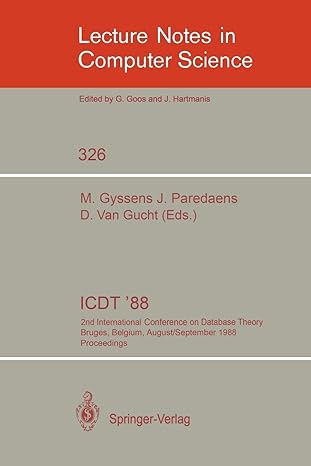Question
Convert the following RStudio code into Jupyter-Python code: Three-way Factorial Analysis of Variance > daphnia View(daphnia) > attach(daphnia) > names(daphnia) [1] Growth.rate Water Detergent Daphnia
Convert the following RStudio code into Jupyter-Python code:
Three-way Factorial Analysis of Variance
> daphnia <- read.csv("/Course Downloadable Data Exercises-20190120/Course Data/daphnia.csv")
> View(daphnia)
> attach(daphnia)
> names(daphnia)
[1] "Growth.rate" "Water" "Detergent" "Daphnia"
> factorial<-aov(Growth.rate~Water*Detergent*Daphnia)
> summary(factorial)
Df Sum Sq Mean Sq F value Pr(>F)
Water 1 1.99 1.985 2.850 0.097838 .
Detergent 3 2.21 0.737 1.059 0.375478
Daphnia 2 39.18 19.589 28.128 8.23e-09 ***
Water:Detergent 3 0.17 0.058 0.084 0.968608
Water:Daphnia 2 13.73 6.866 9.859 0.000259 ***
Detergent:Daphnia 6 20.60 3.433 4.930 0.000532 ***
Water:Detergent:Daphnia 6 5.85 0.975 1.399 0.234324
Residuals 48 33.43 0.696
---
Signif. codes: 0 *** 0.001 ** 0.01 * 0.05 . 0.1 1
> tapply(Growth.rate,list(Detergent,Daphnia),mean)
Clone1 Clone2 Clone3
BrandA 2.732227 3.919002 5.003268
BrandB 2.929140 4.402931 4.698062
BrandC 3.071335 4.772805 4.019397
BrandD 2.626797 5.213745 2.834151
> interaction.plot(Detergent,Daphnia,Growth.rate)
Step by Step Solution
There are 3 Steps involved in it
Step: 1

Get Instant Access to Expert-Tailored Solutions
See step-by-step solutions with expert insights and AI powered tools for academic success
Step: 2

Step: 3

Ace Your Homework with AI
Get the answers you need in no time with our AI-driven, step-by-step assistance
Get Started


